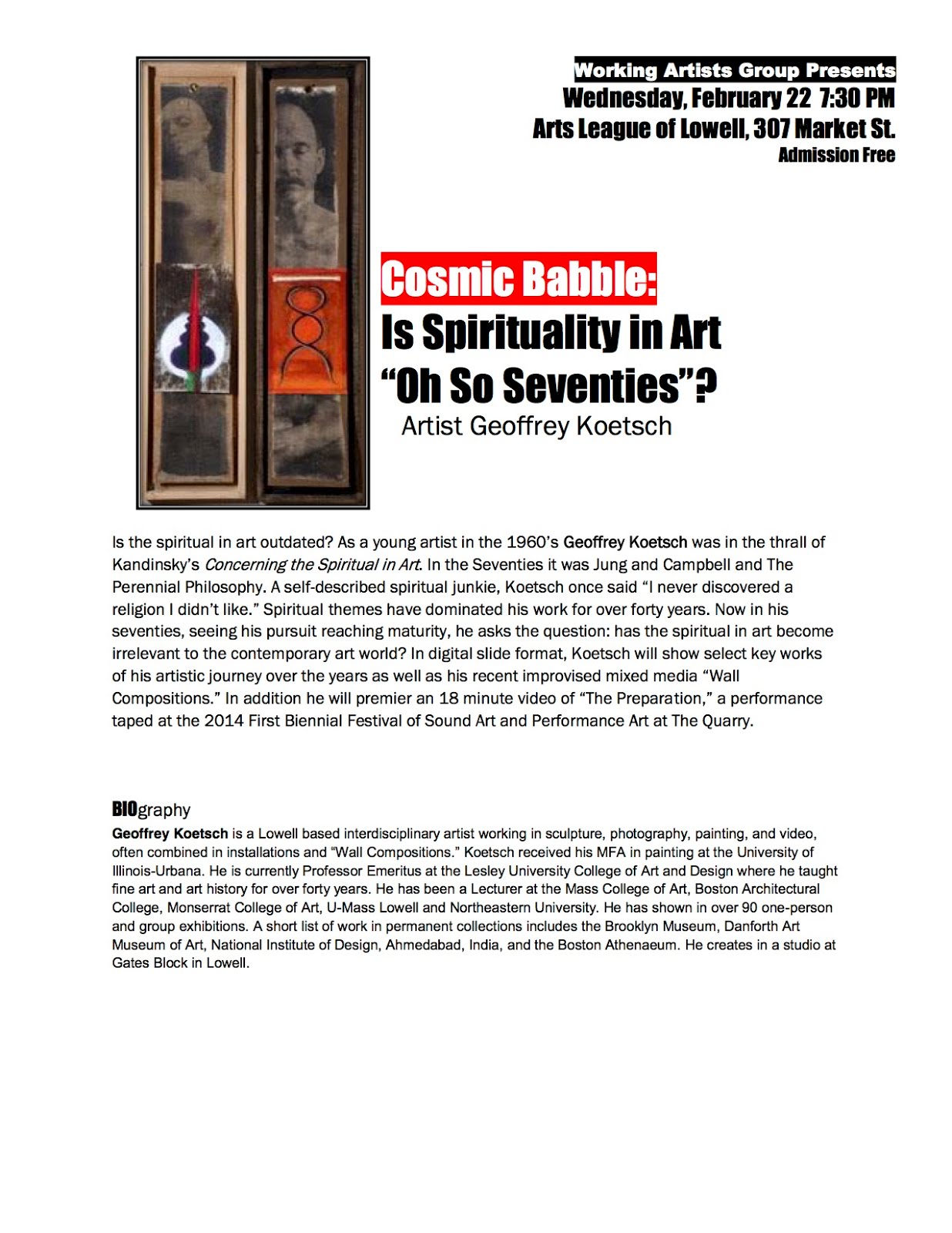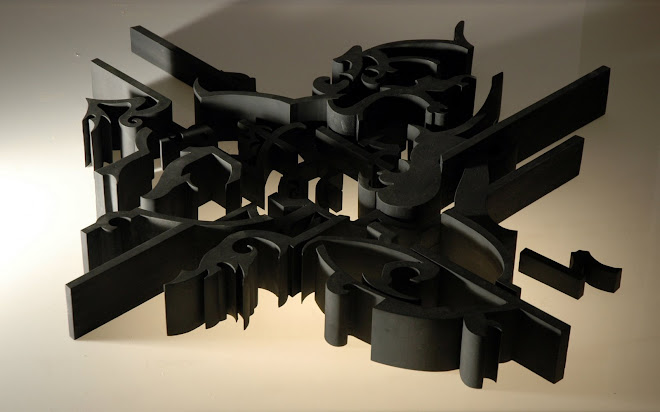Below is the text of a talk delivered at the Harvard Unitarian Universalist Church in Harvard Massachusetts on May 24, 2009. The talk was given in conjunction with the installation in the church of a collaborative artwork titled "KOETSCH AND CHU: IN/BETWEEN" (see photos right and below).
From time to time I have asked myself "could there be such a thing as 'Unitarian Art?'" After all there is a Christian Art, a Buddhist Art, Islamic Art, and so on. And if there were a Unitarian Art, what would it look like?" I looked to my own art for a clue. In the 1960's the New York artist Bruce Nauman made work that was so unconventional that many observers questioned whether it could be called art at all. To which Nauman famously replied: "I'm an artist, and I'm in my studio, so whatever I do must be art." Following this logic I mused: "If I'm an artist, and I'm a Unitarian, whatever I do must be Unitarian Art.
The work on view here today, titled KOETSCH AND CHU: IN/BETWEEN, was a collaborative project between myself and Jeremy chu, a Singaporean artist and photograper of Chinese descent. Jeremy and I engaged in what we called a "visual dialog" with the goal of deepening our interpersonal understanding and bridging our gap in age, race, and nationality. Jeremy Chu is Singaporean of Mandarin Chinese descent--I am an American of Anglo-Saxon descent. He was 30--I was 65. Yet on an artistic and intellectual level we were "connected." And we were friends.
Jeremy and I met about 20 times over the course of this project. To each meeting we brought a specific theme to explore together verbally, and then we would go to our studios to create a visual response to the discussion. We talked about such things as childhood memories, "universal" archetypes such as the maze and the labyrinth, and various other symbols and metaphors.
In 'IN/BETWEEN" the two seated figures are identical, symbolizing our common humanity. They sit in the lotus position, a symbol of mental concentration, and they hold objects representing childhood memories.
CHILDHOOD MEMORIES
One figure holds a net made of red rubber bands rolled on a spindle. It was created by Jeremy and represents the web of his Chinese ancestry. Enmeshed in the net are photograps of his Chinese grandmother, the matriarch of the family. the net was made of a particular kind of red rubber band sent from Singaore that Jeremy had played with as a child. The smell and red color evoked fond memories. Our collaboration was, for Jeremy, part of a larger inquiry into personal identity. The net was originally created for Jeremy's performance titled "The Fisherman's Net: A Journey Towards Reconciliation" (Boston, 2003). The second figure holds a ball of my favorite childhood toy: G.I. Joes. I played "shoot 'em up" until I was 13, well past the gunplay age for most boys. But as an adult, since putting aside toy soldiers, I advocate for peace and international understanding.
THE MAZES
In one of our conversations, we focused on the maze, one of Jung's "universal" archetypes. For us,the mazes represent the attempt of two people to "find their way to one another." "Koetsch's Maze" came from the collision of a decorative Chinese dragon motif and a 1920's era European modernist architectural design. It shows the strong affinity I have always had for Asian culture, Asian art, and Asian spiritual systems (I have at various times and with varying levels of intensity practiced Buddhism and Vedanta. I don't have any idea where this affinity came from, but the very first time I taveled to Japan I felt very much at home. "Chu's Maze" was developed from the lattice pattern of a traditional Chinese window frame. It reflects Jeremy's search for patterns and structures connected to his Chinese ancestry.
So where is the "Unitarian" in all this? First, there is a Unitarian covenant to "seek the truth in love" and the key requirement for love is understanding. Second, Unitarianism teaches tolerance for those who are different from us. And finally, Unitarian-Universalism is Humanistic, built on the desire of people to connect in meaningful ways. That is the underlying principle of this piece of "Unitarian Art."




